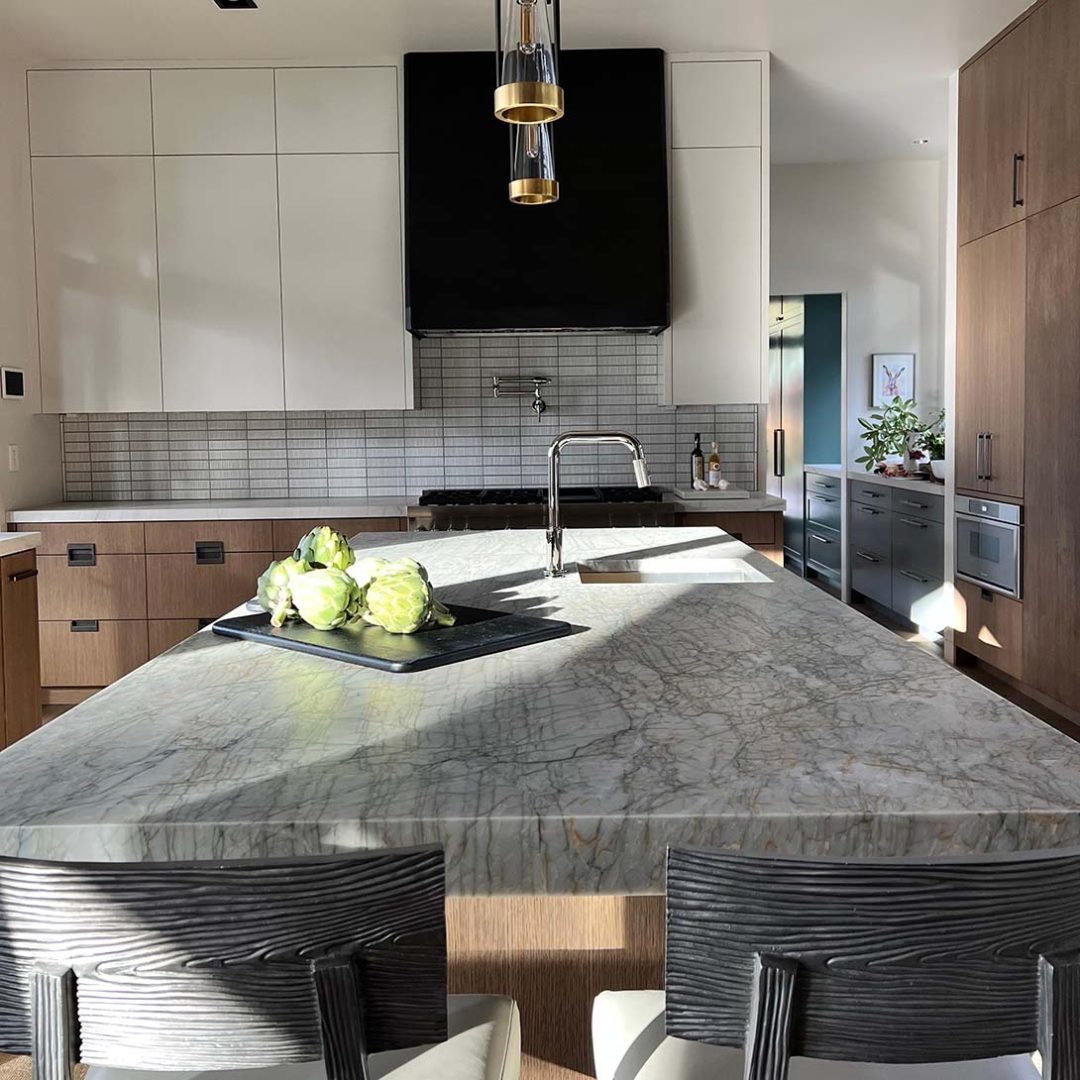Shooting an interior design project can take years. No kidding.
First you have to start with a great client. Then you do the project — a new build could take three years and a renovation, maybe 18 months.You install all this cool stuff, and you book the shoot. But that’s just the beginning.
Getting There
Way, way back, you would finish a job, take some snaps of it and send them off to editors. If they liked what they saw, they would take the time and expense to photograph the house themselves.
But in the world of so much gorgeous and readily available online content, it rarely works that way anymore. Now, most designers peddle their wares to magazines in the form of beautifully complete projects that they’ve had professionally photographed.
For that reason, off I went in the cold fog of January to Whidbey Island near the Seattle coast with my junior designer, Ryan McNitt. We took planes, automobiles and ferries to get there, but we finally made it to our client’s newly finished vacation home to get ready for the days ahead.
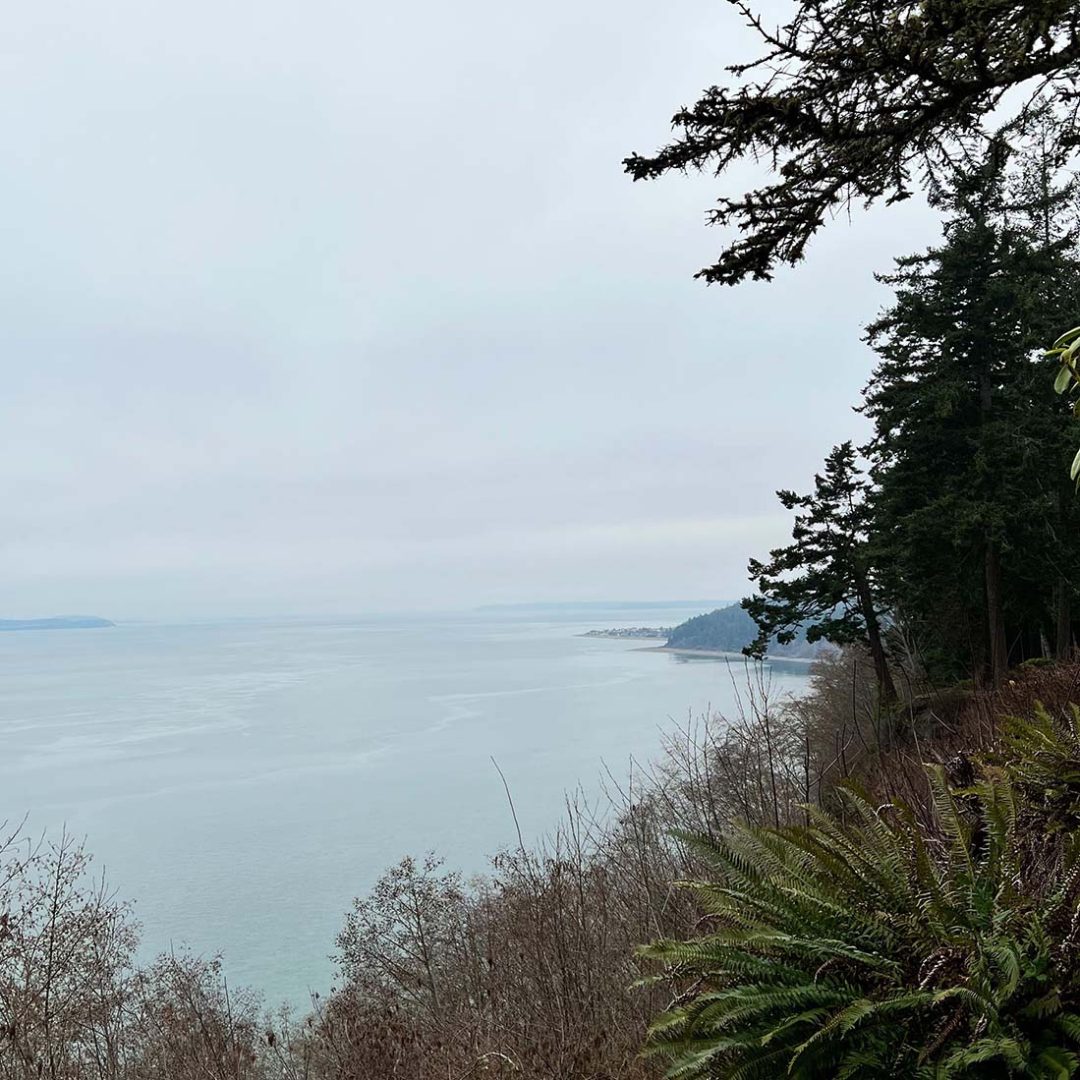
The Stuff
The first member of our team to arrive was the stylist. Using a stylist is a fairly recent phenomenon for interior designers, but magazines and catalogs have always employed them to ensure that every image they use looks perfect.
She came with her SUV packed with big, juicy coffee table books by the dozen, bunches and bunches of flowers, branches of every variety and an array of accessories like a treasure chest. As crazy as it sounds, you can never have enough stuff on a photo shoot. You need to have options, lots of options. At least two for every picture taken, and that can be 75 or 100 images for an average-sized house.
We realized pretty quickly that we were short, so off we went in search of more stuff. The shops in the tiny island towns (mostly shuttered for winter) did offer a few finds. We found a wonderful shop called Edit that had accessories made of felt, and the grocery store was stocked with good linen towels and gorgeous veggies. Finally, we made our way out the beach where we gathered driftwood and rocks of every color worn smooth by their tumble in the ocean.
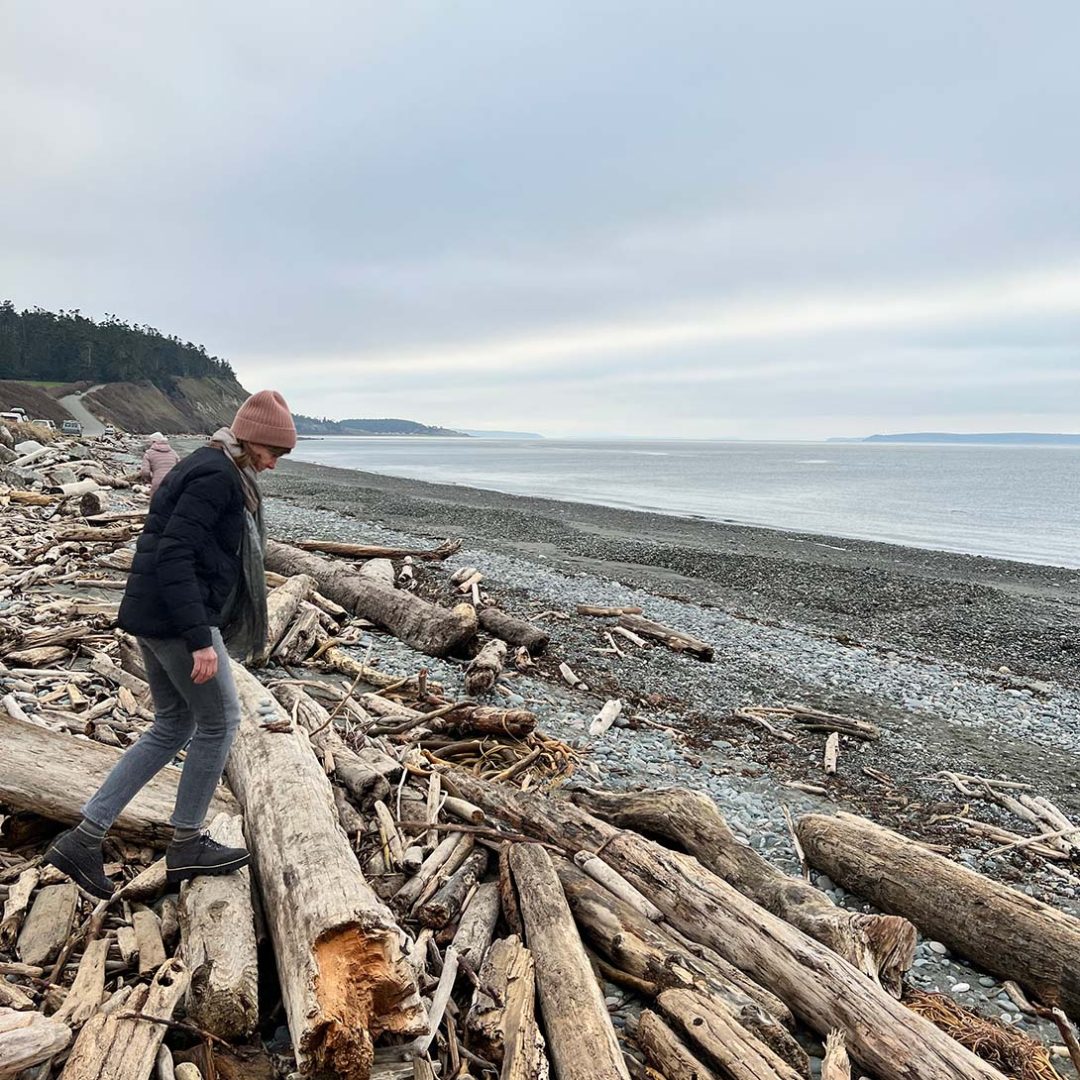
The Lengths We Go
If you think doing a photo shoot sounds glamorous, let me dissuade you. As exciting as they are, it is a lot of hard work and long days on your feet.
In the summer, you sweat (lugging heavy outdoor furniture into or out of a sight line) and in the winter, you freeze (standing in the cold with the doors open wide to get far enough away from something for the right angle). I’ve squatted out of camera view next to a crib holding up a giant (but too flopsy) teddy bear and balanced precipitously on a ladder holding a pendant light in just the right spot.
This particular home has huge, beautiful views of the sound through enormous walls of glass. Unfortunately, it also suffers from sea spray. We spent a good three quarters of an hour with raw, wet hands spraying and then squeegee-ing all of that glass so that we had crystal clear views out to the water. So worth it.
It feels like you always end up eating on your feet (if you take a break at all) ’cause you don’t want to lose that good light. And just when you think you are done, you aren’t. As the light begins to shatter at the end of the day, you want to get outside to shoot the exteriors. Finally, after some carbs to stoke your energy for tomorrow, it’s time to fall into bed.
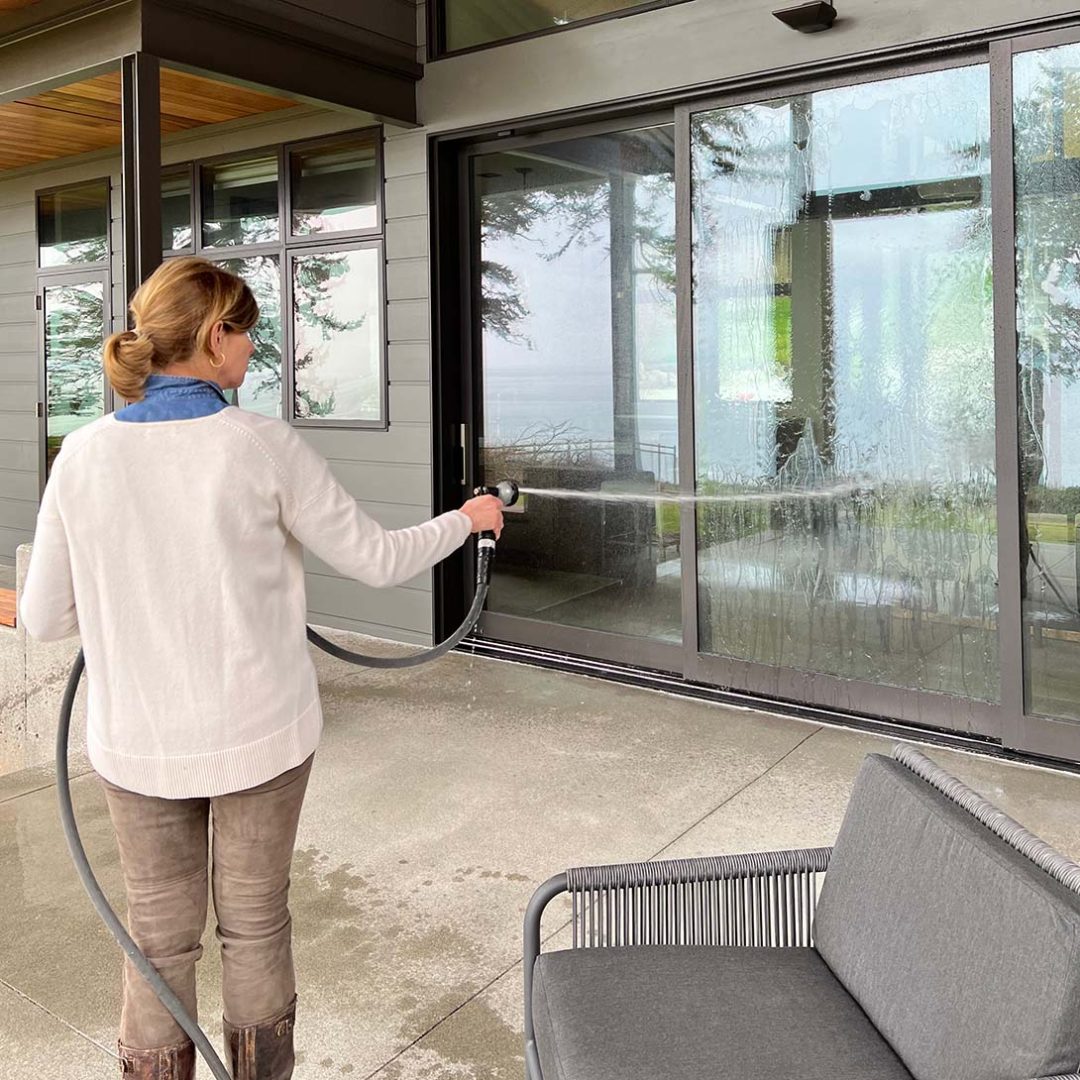
The Reality
What you see isn’t always what you get. Magazine and Instagram photos look amazing, and for the most part, the homes they depict are also spectacular. But we all have outlets and switch plates, and yes, those get photoshopped out of the final image.
We rely on natural lighting, but shadows are filled in by bouncing light off other surfaces and harsh glare is softened by diffusers. All of which have to be held at odd angles and in weird places by photographer’s assistants or by the design team as the camera clicks away.
Technically, we don’t even hear the camera click because it is all digital — photographers often have a computer beside them checking the images in real time. Which is great, because that’s when you can tweak the space.
Furniture may sit a certain way in real life, but not in a photograph. To make, say, a living room look right in a picture, you might need to pull the sofa out at an odd angle or push the coffee table much, much farther away than would ever be practical. And sometimes you have to get really creative and bring in art that hangs in another room so that it can fill a spot that needs a little brightening.
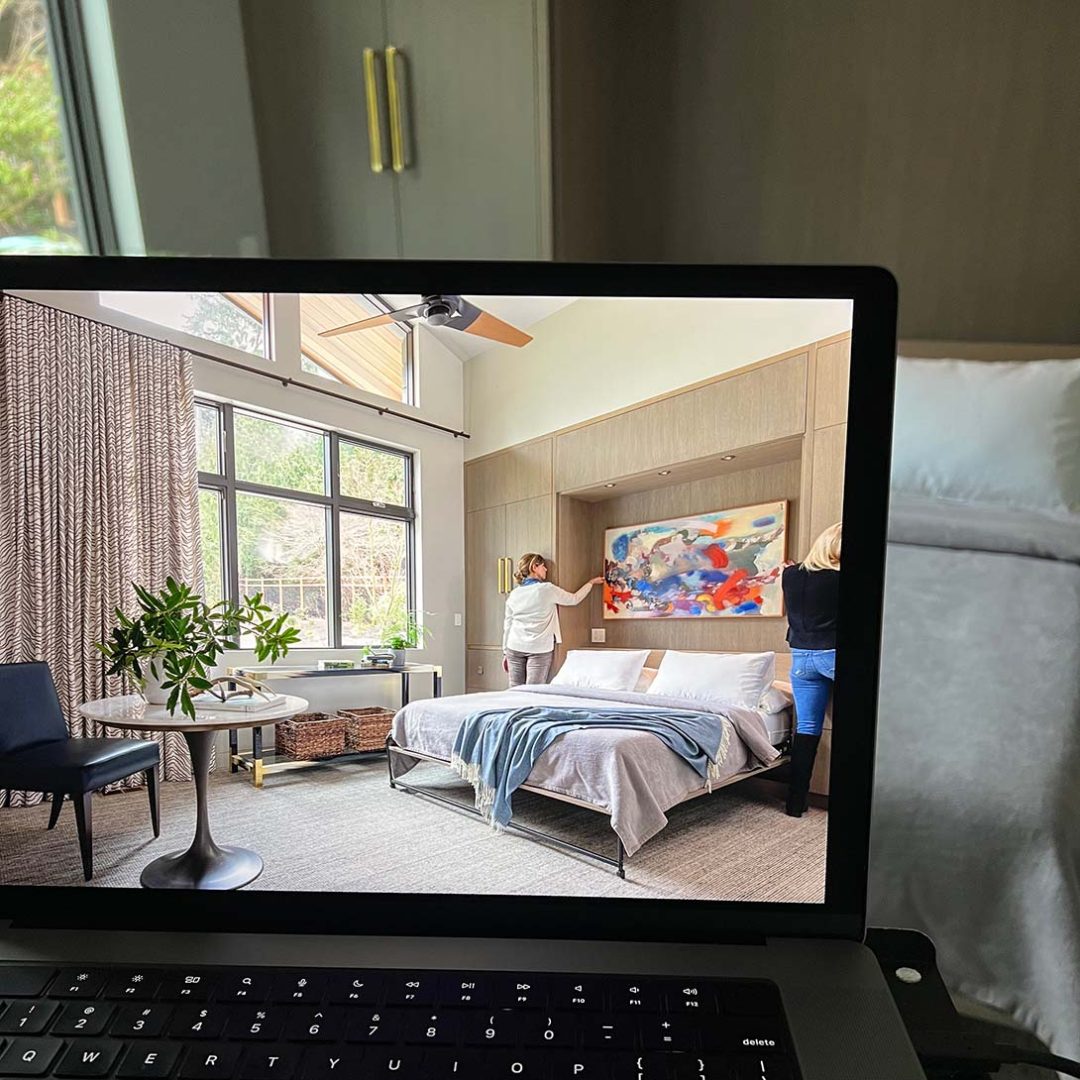
The Result
We are always thankful to our clients who allow us to take over their home for at least a couple of days, and sometimes much longer. They are thrilled to see the results of a photo shoot with the light glinting across their stone countertops in a way that they never took note of before. And they feel pride that their investment and time have paid off so beautifully.
Patience is required. We often wait a couple of weeks to see the final images from a shoot. Gorgeous rooms take a lot of effort. Good design is just the starting point.
